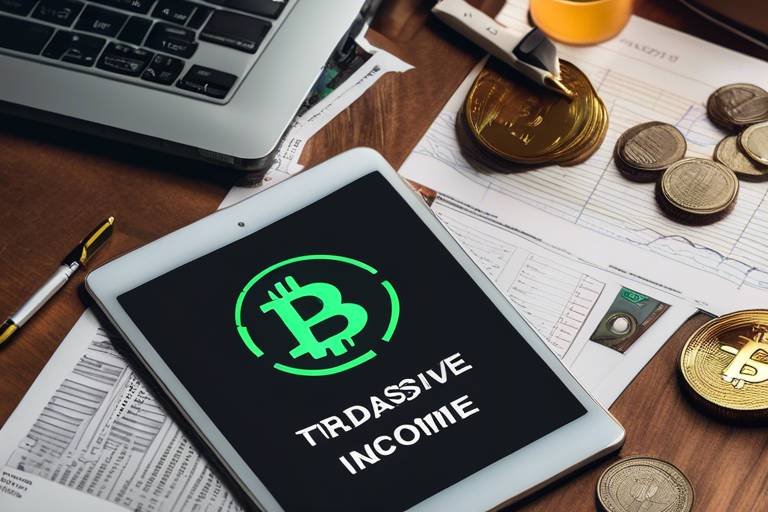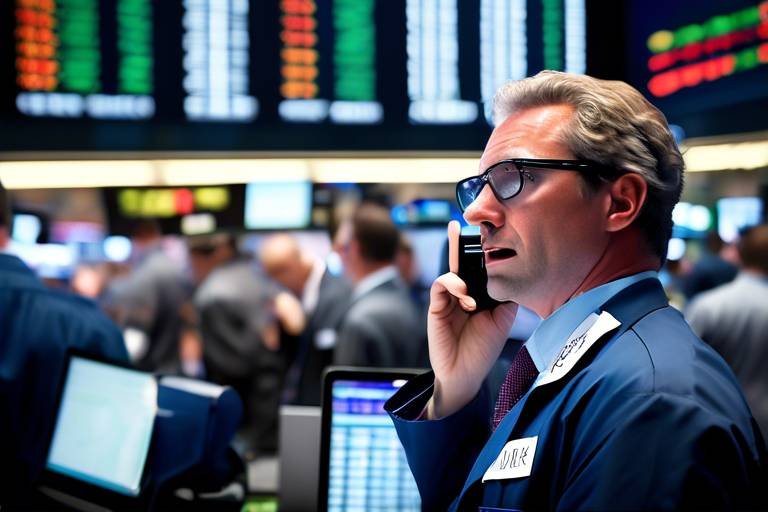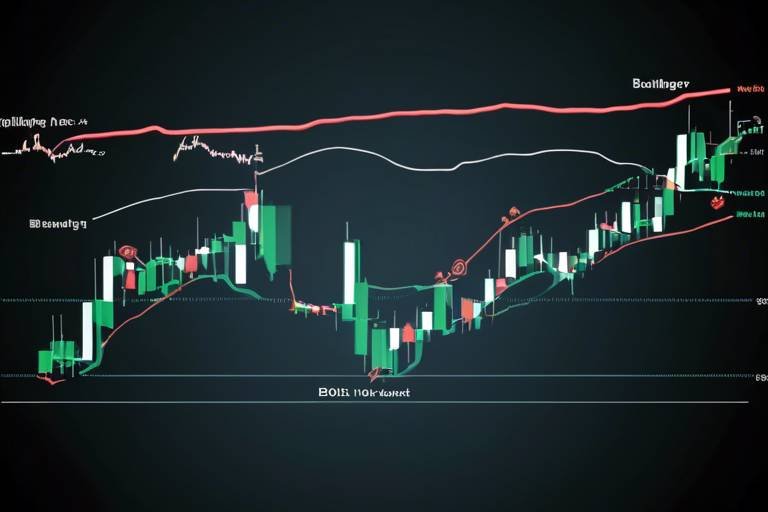Understanding the Impact of Halving Events on Crypto Prices
In the ever-evolving world of cryptocurrencies, few events generate as much buzz and speculation as halving events. These occurrences are not just technical milestones; they can significantly influence the market dynamics of digital currencies, particularly Bitcoin. But what exactly is a halving event, and why should you care? In simple terms, a halving event reduces the reward for mining new blocks by half, effectively tightening the supply of new coins entering circulation. This reduction in supply can lead to a *dramatic* impact on prices, as seen in historical trends. Understanding these events is crucial for investors and enthusiasts alike, as they hold the key to anticipating future market movements and making informed trading decisions.
The significance of halving events extends beyond mere supply adjustments. They represent a fundamental aspect of cryptocurrency economics, designed to introduce scarcity and maintain a deflationary model. For instance, Bitcoin’s protocol dictates that the reward for mining blocks is halved approximately every four years. This mechanism not only influences the mining community's behavior but also sends ripples through the broader market, affecting investor sentiment and trading strategies.
As we delve deeper into the historical implications of these events, we will uncover fascinating patterns that have emerged over the years. Each halving event has been followed by notable price fluctuations, often leading to significant bull runs. However, it’s not just about the numbers; the psychology behind these movements plays a crucial role. Investors often react to the anticipation of halving events, leading to speculative trading that can exacerbate price volatility.
In this article, we will explore the intricate relationship between halving events and cryptocurrency prices, examining historical data and case studies, particularly focusing on Bitcoin. We will also compare Bitcoin's halving effects with those of other cryptocurrencies, such as Litecoin and Ethereum. Finally, we’ll discuss how understanding market psychology can help investors navigate the tumultuous waters of crypto trading, especially during these pivotal moments.
Halving events are a cornerstone of many cryptocurrencies, particularly Bitcoin. When we talk about halving, we refer to the process where the reward for mining new blocks is cut in half. This is crucial because it directly impacts the supply of the cryptocurrency. As the supply decreases, assuming demand remains constant or increases, the price is likely to rise. This simple economic principle of supply and demand is at the heart of why halving events are so significant.
For Bitcoin, halving events occur approximately every four years, or after every 210,000 blocks are mined. The first halving took place in 2012, reducing the block reward from 50 BTC to 25 BTC. The second halving in 2016 cut it down further to 12.5 BTC, and the most recent halving in May 2020 saw the reward drop to 6.25 BTC. Each of these events has been followed by substantial price increases, demonstrating a clear correlation between halving and market performance.
Understanding the mechanics behind halving events is essential for anyone looking to invest in cryptocurrencies. It’s not just about the immediate price changes; it’s about the long-term implications for the cryptocurrency ecosystem. As mining rewards decrease, the incentive for miners to continue validating transactions shifts. This can lead to a decrease in the overall network security if the price does not increase sufficiently to justify the costs of mining.
To truly grasp the impact of halving events on cryptocurrency prices, we must look at historical data. Analyzing past events reveals recurring patterns in price movements that can be invaluable for investors. For instance, after each halving, Bitcoin has typically experienced a significant price surge, often reaching new all-time highs within a year. This trend has led many to speculate that the upcoming halving events will similarly influence prices.
| Halving Event | Date | Block Reward | Price 1 Year Later |
|---|---|---|---|
| First Halving | November 28, 2012 | 25 BTC | $1,200 |
| Second Halving | July 9, 2016 | 12.5 BTC | $2,500 |
| Third Halving | May 11, 2020 | 6.25 BTC | $60,000 |
This table illustrates the remarkable price increases that have followed each halving event. While past performance does not guarantee future results, the data suggests a strong correlation between halving events and subsequent price surges. As we move forward, understanding these trends can help investors make informed decisions about their portfolios.
- What is a halving event? A halving event is a process that reduces the reward for mining new blocks in a cryptocurrency network, typically occurring every four years for Bitcoin.
- How does halving affect cryptocurrency prices? Halving events generally lead to reduced supply, which can drive prices up if demand remains steady or increases.
- Are all cryptocurrencies affected by halving events? While Bitcoin is the most notable example, other cryptocurrencies like Litecoin and Ethereum also experience halving events with varying impacts on their prices.

The Concept of Halving Events
Halving events are pivotal milestones in the world of cryptocurrencies, particularly for Bitcoin, which is the most recognized digital currency. But what exactly is a halving event? In simple terms, a halving event occurs when the reward for mining new blocks is cut in half. This mechanism is built into the code of Bitcoin and many other cryptocurrencies to control the supply and, ultimately, the inflation rate of the currency. Imagine it as a way of ensuring that the digital currency doesn’t become too abundant, much like how a rare collectible becomes more valuable as fewer of them are available.
The significance of halving events cannot be overstated. They not only affect the miners—those who validate transactions and secure the network—but also create a ripple effect throughout the entire market. When the mining reward is halved, it reduces the rate at which new coins are generated. With fewer coins entering circulation, the basic economic principle of supply and demand comes into play. If demand remains constant or increases while supply decreases, the price is likely to rise. This dynamic is crucial for understanding why halving events often lead to significant price surges in the months that follow.
Let's break down a few key aspects regarding halving events:
- Supply Control: By halving the mining rewards, cryptocurrencies ensure that the total supply is capped. For Bitcoin, this cap is set at 21 million coins.
- Inflation Management: This mechanism helps to combat inflation, making the currency more appealing as a store of value over time.
- Market Sentiment: Halving events often generate buzz in the cryptocurrency community, leading to increased speculation and trading activity.
In essence, halving events are a critical component of the economic framework surrounding cryptocurrencies. They not only influence the behavior of miners but also have broader implications for investors and the market as a whole. As we move forward, understanding these events and their impact on price dynamics will be essential for anyone looking to navigate the ever-evolving landscape of digital currencies. The next sections will delve deeper into historical price trends and case studies, shedding light on how these events have shaped the crypto market in the past.

Historical Price Trends
The world of cryptocurrencies is as dynamic as it is fascinating, especially when we delve into the surrounding halving events. These events are not just mere occurrences; they are pivotal moments that can send ripples through the market, influencing prices in ways that often surprise investors and analysts alike. To truly understand the impact of halving events, we must look back at the historical data and examine the patterns that have emerged over the years.
When we analyze the price movements of major cryptocurrencies during and after halving events, we often see a distinct correlation between these events and significant price surges. For instance, the first Bitcoin halving in 2012 saw the price skyrocket from around $12 to over $1,000 within a year. This dramatic increase was not just a fluke; it set the stage for future halvings and their associated price trends. The second halving in 2016 followed a similar trajectory, with Bitcoin's price rising from approximately $450 to nearly $20,000 by the end of 2017.
To illustrate this further, let's take a closer look at the historical price trends surrounding Bitcoin's halving events:
| Halving Event | Date | Price Before Halving | Price After 1 Year | Price Change (%) |
|---|---|---|---|---|
| First Halving | November 28, 2012 | $12 | $1,000 | 8,233% |
| Second Halving | July 9, 2016 | $450 | $20,000 | 4,344% |
| Third Halving | May 11, 2020 | $8,500 | $64,000 | 647% |
As we can see from the table, each halving event has been followed by remarkable price increases, showcasing a consistent trend that many investors have come to expect. However, it’s essential to recognize that while historical trends can provide insights, they do not guarantee future performance. The cryptocurrency market is notoriously volatile, and a myriad of factors can influence price movements beyond just halving events.
Additionally, we should consider the role of market sentiment during these halving periods. Investors often become more optimistic as the halving date approaches, leading to increased buying activity. This behavior can create a self-fulfilling prophecy, where the anticipation of price increases encourages more purchases, thereby driving prices up even further. Conversely, after the initial price surge post-halving, we often see corrections as profit-taking occurs, highlighting the need for caution among traders.
In conclusion, understanding the historical price trends associated with halving events is crucial for anyone looking to navigate the cryptocurrency market. These events serve as significant markers that can influence not only the price of Bitcoin but also the broader market landscape. As we look ahead, it’s essential for investors to remain vigilant and informed, keeping in mind the lessons learned from past halving events while also considering the unique circumstances of the current market environment.
- What is a halving event? A halving event is a significant occurrence in cryptocurrency networks that reduces the reward for mining new blocks, effectively controlling the supply of the cryptocurrency.
- How often do halving events occur? For Bitcoin, halving events occur approximately every four years, or every 210,000 blocks mined.
- Can halving events guarantee price increases? While historical data shows a correlation between halving events and price increases, there are no guarantees due to the volatile nature of the cryptocurrency market.
- What should investors consider before a halving event? Investors should analyze market trends, investor sentiment, and historical price movements to make informed decisions.

Case Study: Bitcoin Halvings
The phenomenon of Bitcoin halvings is not just a technical adjustment; it’s a critical event that has historically shaped the landscape of cryptocurrency investing. Each halving event reduces the reward for mining new blocks by half, which effectively limits the supply of new bitcoins entering the market. This scarcity can lead to dramatic shifts in price, making it essential for investors and enthusiasts to understand the implications of these events. Let's take a closer look at each halving event and its impact on Bitcoin's price trajectory and investor sentiment.
Since its inception, Bitcoin has undergone three halving events: in 2012, 2016, and 2020. Each of these events has been characterized by significant market reactions, often leading to substantial price increases in the months that followed. The first halving in 2012 saw the block reward drop from 50 BTC to 25 BTC. This event was relatively under the radar, but it set the stage for a price surge that brought Bitcoin into the spotlight. By the end of 2013, Bitcoin's price skyrocketed to over $1,000, a monumental leap from the mere $12 it was trading at before the halving.
The second halving in 2016 was a different story. By this time, Bitcoin had already gained considerable media attention and a growing investor base. The block reward was reduced from 25 BTC to 12.5 BTC, and the market reacted with a mixture of excitement and speculation. Leading up to the halving, Bitcoin's price rose from around $450 to nearly $700. Following the halving, the price continued to climb, reaching an all-time high of nearly $20,000 in December 2017. This event not only solidified Bitcoin's status as a digital asset but also demonstrated the power of market psychology in response to halving events.
The most recent halving occurred in May 2020, reducing the block reward to 6.25 BTC. This time, the market was already experiencing a bullish trend, fueled by institutional interest and increased adoption of cryptocurrencies. Leading up to the halving, Bitcoin’s price surged from approximately $4,000 in March to nearly $10,000 in May. Post-halving, Bitcoin reached new heights, hitting over $60,000 in April 2021. The price movements surrounding this halving event were influenced by a combination of factors, including broader economic conditions, the influx of retail investors, and a heightened awareness of Bitcoin’s scarcity.
To summarize the effects of Bitcoin's halving events, consider the following table that highlights key price movements:
| Halving Event | Date | Block Reward (BTC) | Price Before Halving | Price After 1 Year |
|---|---|---|---|---|
| First Halving | November 28, 2012 | 25 | $12 | $1,000+ |
| Second Halving | July 9, 2016 | 12.5 | $450 | $20,000+ |
| Third Halving | May 11, 2020 | 6.25 | $8,000 | $60,000+ |
In conclusion, Bitcoin halving events play a crucial role in shaping market dynamics and investor sentiment. As we’ve seen through historical trends, these events can lead to substantial price increases, driven by the interplay of scarcity, speculation, and broader market conditions. Understanding these patterns not only helps investors make informed decisions but also sheds light on the overall trajectory of Bitcoin as a leading digital asset.
- What is a Bitcoin halving event? A Bitcoin halving event occurs approximately every four years, reducing the reward for mining new blocks by half, which limits the supply of new bitcoins.
- How does halving affect Bitcoin's price? Historically, Bitcoin's price tends to increase following a halving event due to reduced supply and increased demand, often leading to speculative buying.
- When is the next Bitcoin halving expected? The next Bitcoin halving is projected to occur in 2024, and it is anticipated to once again influence market dynamics.
- Can other cryptocurrencies experience halving? Yes, other cryptocurrencies like Litecoin and Bitcoin Cash also have halving events that can impact their respective markets.

First Halving (2012)
The first Bitcoin halving, which took place on November 28, 2012, was a watershed moment in the cryptocurrency landscape. This event reduced the block reward for miners from 50 bitcoins to 25 bitcoins, effectively halving the rate at which new bitcoins were introduced into circulation. The significance of this halving cannot be overstated; it marked the first time that the Bitcoin community had to grapple with the implications of scarcity in a digital currency. Just like how a limited edition item tends to gain value over time due to its rarity, the halving event introduced a similar dynamic to Bitcoin.
In the months leading up to the 2012 halving, Bitcoin was still relatively unknown, trading at around $12. However, as the halving date approached, anticipation began to build. Investors started to speculate on the potential price increase due to the reduced supply of new bitcoins. This speculation was not unfounded; historical data suggests that halving events tend to precede significant bullish runs. As a result, the price of Bitcoin began to rise steadily, reaching approximately $1,200 by late 2013.
To understand the impact of this halving event, let's take a look at the price trajectory surrounding the event:
| Date | Price (USD) | Block Reward |
|---|---|---|
| November 2012 | $12 | 50 BTC |
| Post-Halving (2013) | $1,200 | 25 BTC |
The first halving event not only validated the economic model of Bitcoin but also instilled a sense of confidence among early adopters and investors. The surge in price following the halving was fueled by a combination of factors, including increased media attention, growing interest from retail investors, and the realization that Bitcoin was indeed a viable alternative to traditional currencies.
However, it’s essential to note that while the halving created an environment ripe for price increases, it also led to increased volatility. Just as a roller coaster ride can evoke both thrill and anxiety, Bitcoin's price experienced dramatic fluctuations in the months following the halving. Investors who entered the market post-halving were often caught in the whirlwind of excitement and fear, leading to a mix of euphoric gains and painful losses.
In summary, the first halving event in 2012 was a landmark occasion that set the stage for Bitcoin's future. It introduced the concept of scarcity to the cryptocurrency market and demonstrated how halving events could drive prices upward. The lessons learned from this event continue to resonate in the crypto community today, as investors and traders closely monitor future halvings with the hope of replicating the success experienced after the first one.

Second Halving (2016)
The second Bitcoin halving took place on July 9, 2016, and it was a significant milestone in the cryptocurrency world, marking yet another pivotal moment in Bitcoin's journey. At this point, the block reward for miners was cut from 25 BTC to 12.5 BTC, effectively halving the rate at which new Bitcoins were created. This change was not just a technical adjustment; it sent ripples throughout the entire cryptocurrency market, influencing both investor behavior and market dynamics.
In the lead-up to this halving event, there was a palpable sense of excitement and anticipation among investors and enthusiasts alike. Many believed that the halving would trigger a price surge similar to what was witnessed after the first halving in 2012. Indeed, the months preceding the event saw a steady increase in Bitcoin's price, fueled by speculation and the growing awareness of Bitcoin's finite supply. By the time the halving occurred, Bitcoin's price had already risen significantly, reaching approximately $650.
Following the halving, the market experienced a notable period of volatility. Initially, Bitcoin's price dipped slightly as traders took profits and adjusted their positions. However, this downturn was short-lived. Over the next several months, Bitcoin's price began to climb, ultimately reaching an all-time high of nearly $20,000 in December 2017. This dramatic increase was attributed to several factors, including the growing mainstream interest in cryptocurrencies, the influx of new investors, and the overall bullish sentiment in the market.
To better understand the impact of the second halving, let's take a look at the price movements before and after the event:
| Date | Price (BTC) | Event |
|---|---|---|
| July 1, 2016 | $670 | Pre-halving anticipation |
| July 9, 2016 | $650 | Halving event |
| December 31, 2016 | $964 | Post-halving price recovery |
| December 31, 2017 | $13,880 | Price peak following halving |
In summary, the second halving in 2016 was not just a technical event; it was a catalyst for a massive price rally that would change the landscape of cryptocurrency investment. The combination of reduced supply and increased demand created a perfect storm for Bitcoin's price to soar, leading to unprecedented interest from both retail and institutional investors. This halving event also reinforced the belief in Bitcoin's deflationary model, where scarcity can drive value over time, making it an attractive asset for long-term investment.
- What is a halving event? A halving event is a pre-programmed reduction in the reward for mining new blocks in a cryptocurrency network, such as Bitcoin.
- How does halving affect Bitcoin's price? Halving events tend to create scarcity, which can lead to increased demand and higher prices, although market reactions can vary.
- When is the next Bitcoin halving expected? The next Bitcoin halving is expected to occur in 2024, based on the current block generation rate.
- Are other cryptocurrencies affected by halving? Yes, other cryptocurrencies like Litecoin and Bitcoin Cash also experience halving events, which can similarly impact their prices.
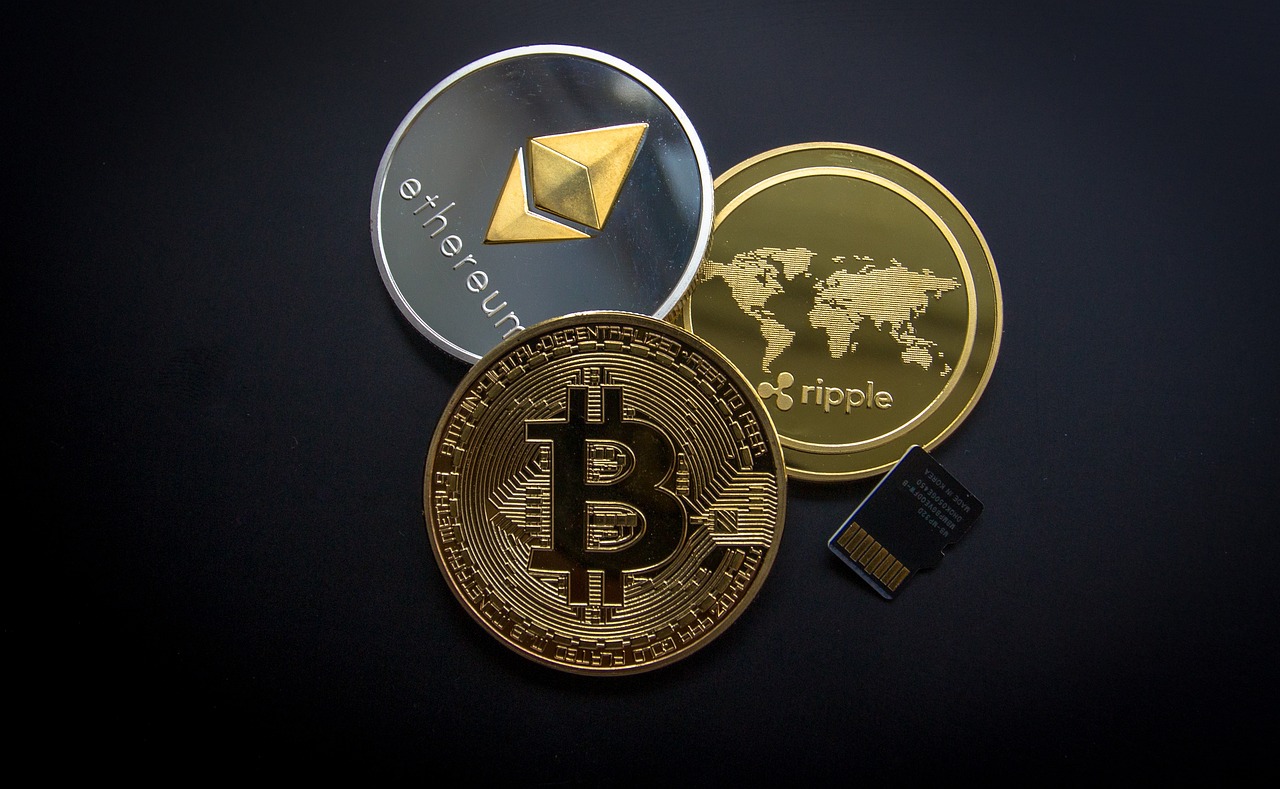
Comparative Analysis with Other Cryptos
While Bitcoin reigns supreme as the most recognized cryptocurrency, it's essential to explore how other cryptocurrencies experience similar halving events and their impacts on market dynamics. For instance, Litecoin and Ethereum have also undergone halving events, albeit with different mechanics and outcomes. Each of these cryptocurrencies has unique characteristics that influence their market behavior during such pivotal moments.
Litecoin, often dubbed the "silver to Bitcoin's gold," underwent its halving in August 2019. Similar to Bitcoin, the halving reduced the mining reward from 25 LTC to 12.5 LTC. Historically, Litecoin's price saw significant increases post-halving, but the extent and timing of these increases were markedly different from Bitcoin's. For example, after the 2019 halving, Litecoin's price surged initially but then faced volatility, reflecting a more speculative market environment compared to Bitcoin's more stable growth trajectory.
On the other hand, Ethereum, while not traditionally associated with halving events, has its mechanisms for reducing supply through different methods, such as the EIP-1559 upgrade. This upgrade introduced a fee-burning mechanism that effectively reduces the supply of ETH over time, creating a similar scarcity effect as halving. However, the market's response to Ethereum's supply changes has been influenced more by its utility in decentralized applications and smart contracts rather than just its supply dynamics.
To illustrate these comparative dynamics, let's take a look at the following table summarizing the halving events and their effects on price movements:
| Cryptocurrency | Halving Date | Mining Reward Before | Mining Reward After | Price Change Post-Halving |
|---|---|---|---|---|
| Bitcoin | May 2020 | 12.5 BTC | 6.25 BTC | +300% within a year |
| Litecoin | August 2019 | 25 LTC | 12.5 LTC | +200% within a year |
| Ethereum | N/A (EIP-1559) | N/A | N/A (Fee burning) | Varies based on market conditions |
This table highlights the differences in halving events and their subsequent effects on price movements across different cryptocurrencies. While Bitcoin's halvings have consistently led to substantial price increases, Litecoin's experience shows that the market can react differently based on sentiment, timing, and external factors. Ethereum, with its unique approach to supply reduction, demonstrates that the market can respond to changes in economic models beyond traditional halving events.
In conclusion, understanding the comparative analysis of halving events across various cryptocurrencies provides valuable insights for investors. Each cryptocurrency's unique characteristics and market factors play a critical role in shaping their price trajectories. As we continue to witness the evolution of these digital assets, keeping an eye on how halving events influence not just Bitcoin but the broader crypto landscape will be essential for informed investment decisions.
- What is a halving event? A halving event is when the reward for mining new blocks in a cryptocurrency network is cut in half, reducing the rate at which new coins are generated.
- How does halving affect cryptocurrency prices? Historically, halving events have led to price increases due to the reduced supply of coins, creating scarcity and driving demand.
- Are all cryptocurrencies affected by halving? Not all cryptocurrencies have halving events; some use different mechanisms to manage supply, like Ethereum's fee-burning model.
- Should I invest in cryptocurrencies during a halving event? While many investors see halving events as opportunities, it's essential to conduct thorough research and consider market conditions before investing.

Market Psychology and Speculation
When it comes to cryptocurrency, market psychology plays a pivotal role in shaping price movements, especially during halving events. These events are not just technical occurrences; they stir emotions, create buzz, and often lead to a frenzy of trading activity. Why does this happen? Well, it all boils down to the human element in trading. Investors, driven by fear and greed, often react impulsively to news and events, which can lead to significant price volatility.
During halving events, the narrative surrounding cryptocurrencies like Bitcoin tends to shift dramatically. Investors often speculate about the future price of the asset based on historical trends and the perceived scarcity that halving creates. This anticipation can lead to a surge in buying activity before the event, as traders rush in to capitalize on potential price increases. However, as the event approaches, some investors may also panic-sell, fearing a downturn. This psychological tug-of-war can create a rollercoaster of price fluctuations, making it crucial for traders to remain level-headed.
One fascinating aspect of this psychological phenomenon is the concept of FOMO (Fear of Missing Out). As prices begin to rise leading up to a halving, more and more investors jump on the bandwagon, not wanting to miss out on potential profits. This can create a self-fulfilling prophecy; as more people buy in, the price continues to rise, further fueling the FOMO cycle. However, this can also lead to a sharp correction post-halving when reality sets in and the hype fades.
Additionally, the sentiment analysis of social media and online forums can provide insights into market psychology. Traders often turn to platforms like Twitter or Reddit to gauge the mood of the community. A surge in positive sentiment can encourage buying, while negative sentiment can lead to panic selling. The influence of social media cannot be understated; it has become a significant driver of market trends in the crypto space.
To illustrate the impact of market psychology during halving events, let’s take a look at the historical price movements surrounding Bitcoin’s halvings. The table below summarizes the price changes before and after each halving event:
| Halving Event | Date | Price Before Halving | Price After 1 Month | Price After 6 Months |
|---|---|---|---|---|
| First Halving | November 28, 2012 | $12.31 | $1,200 | $650 |
| Second Halving | July 9, 2016 | $657.61 | $2,800 | $2,500 |
| Third Halving | May 11, 2020 | $8,500 | $10,000 | $30,000 |
This table highlights the dramatic price increases following each halving, showcasing how speculation and market psychology can drive prices to new heights. However, it’s essential to remember that past performance does not guarantee future results. As the cryptocurrency market matures, the dynamics of investor behavior may continue to evolve.
In conclusion, understanding market psychology and speculation is crucial for anyone looking to navigate the tumultuous waters of cryptocurrency trading. By recognizing the emotional drivers behind price movements, investors can make more informed decisions, ultimately enhancing their chances of success in this exciting yet volatile market.
- What is a halving event? A halving event is when the reward for mining new blocks is cut in half, impacting the supply of the cryptocurrency.
- How do halving events affect prices? Historically, halving events have led to price increases as they create scarcity, but market psychology can also lead to volatility.
- Are all cryptocurrencies affected by halving events? While Bitcoin is the most notable example, other cryptocurrencies like Litecoin also experience halvings that can impact their prices.
- What strategies should investors use during halving events? Investors should consider their risk tolerance and may want to employ strategies like dollar-cost averaging or setting stop-loss orders.

Investor Sentiment
Understanding during halving events is crucial for grasping the dynamics of the cryptocurrency market. When a halving occurs, it often stirs a cocktail of emotions among investors—excitement, fear, hope, and anxiety. These feelings can lead to a whirlwind of trading activity, as participants react not only to the event itself but also to the speculation surrounding it. For instance, many investors may anticipate a price surge following a halving, leading to a rush to buy before the event. This is often referred to as the “buy the rumor, sell the news” phenomenon.
Moreover, the psychology of scarcity plays a significant role in shaping investor sentiment. As the rewards for mining decrease, the supply of new coins diminishes, creating a perception of increased value over time. This scarcity can lead to heightened demand, as investors believe that the remaining coins will become more valuable. However, this sentiment can also flip quickly; if the market does not react as expected, panic selling can ensue, leading to sudden price drops that catch many off guard.
To illustrate the impact of sentiment on market behavior, let’s take a look at a few key factors that influence investor sentiment during halving events:
- Media Coverage: The buzz generated by news outlets and social media can amplify investor emotions. Positive coverage can lead to increased buying pressure, while negative news can trigger fear and selling.
- Community Discussions: Online forums and social media platforms are hotbeds for speculation and sentiment. Investors often share their expectations and fears, influencing others' decisions.
- Historical Performance: Many investors look at past halving events to guide their decisions. If previous halvings resulted in significant price increases, there’s a tendency to expect similar outcomes.
In essence, investor sentiment is a double-edged sword; it can drive prices up in anticipation of a halving but can also lead to volatility if expectations are not met. As we move forward, understanding these psychological aspects will be vital for anyone looking to navigate the choppy waters of cryptocurrency trading during halving events.
1. What is a halving event?
A halving event is a significant occurrence in certain cryptocurrencies, such as Bitcoin, where the reward for mining new blocks is cut in half. This mechanism is designed to control the supply of the currency and can influence its price.
2. How does investor sentiment affect cryptocurrency prices?
Investor sentiment can significantly influence cryptocurrency prices, especially during events like halvings. Positive sentiment can lead to increased buying, while negative sentiment can result in panic selling.
3. Are all cryptocurrencies affected by halving events?
While Bitcoin is the most well-known cryptocurrency to experience halving events, other cryptocurrencies like Litecoin and Bitcoin Cash also undergo similar events, which can impact their market dynamics.
4. What strategies can investors use during halving events?
Investors might adopt various strategies, such as buying before the halving in anticipation of price increases or using stop-loss orders to manage risk during periods of heightened volatility.
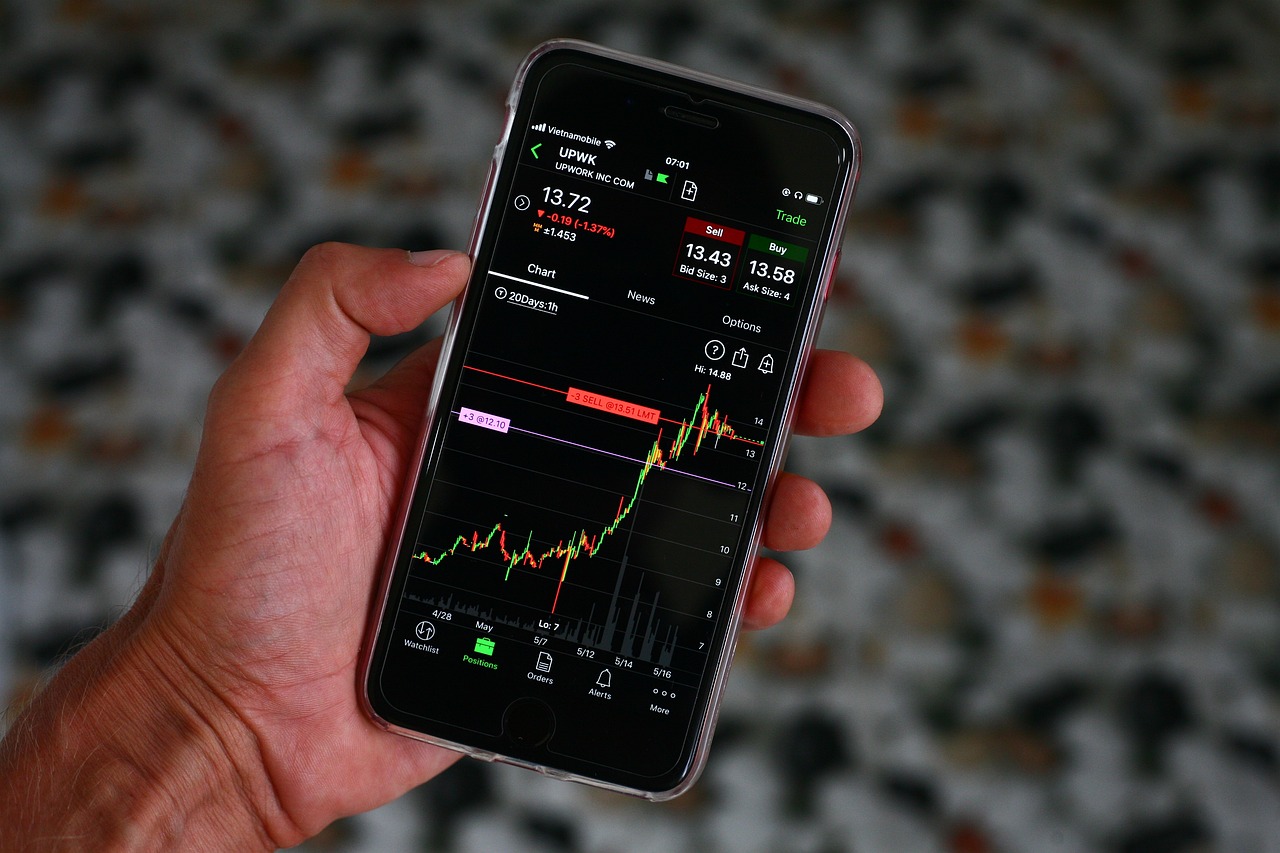
Trading Strategies Post-Halving
After a halving event, the cryptocurrency market often experiences a whirlwind of activity, and savvy investors are keen to capitalize on the new dynamics. The aftermath of a halving can be a double-edged sword; while it can lead to significant price increases, it can also introduce volatility that may catch even seasoned traders off guard. So, what are the best strategies to adopt in this post-halving landscape?
One of the most popular approaches is the buy-and-hold strategy. This strategy is rooted in the belief that the long-term value of cryptocurrencies like Bitcoin will continue to rise after a halving. Investors who choose this path typically purchase assets before the halving and hold onto them for an extended period, often years. The rationale behind this is simple: history shows that Bitcoin's price tends to increase significantly after each halving. However, timing the market can be tricky, and patience is key.
Another effective strategy is scalping, which involves making multiple trades over short time frames to capitalize on small price movements. Post-halving, the market can be highly volatile, presenting numerous opportunities for scalpers. This strategy requires a keen eye on market trends and rapid decision-making skills, as prices can fluctuate dramatically within minutes. Scalpers often utilize technical analysis tools to identify patterns and make informed trades.
For those who prefer a more cautious approach, dollar-cost averaging (DCA) can be a prudent choice. This strategy involves investing a fixed amount of money at regular intervals, regardless of the asset’s price. By doing so, investors can mitigate the risk of entering the market at a high point. DCA allows traders to build their positions gradually, which can be particularly beneficial in a post-halving environment where prices can be unpredictable.
Moreover, it's crucial to keep an eye on market sentiment and news developments. The cryptocurrency space is heavily influenced by social media, news articles, and public perception. Engaging with the community through forums or social platforms can provide insights into prevailing sentiments that may affect trading decisions. Understanding the psychology behind market movements can give traders an edge in anticipating price changes.
Lastly, employing stop-loss orders can be a smart safety net for investors. These orders automatically sell a cryptocurrency when its price drops to a certain level, helping to minimize potential losses. Given the volatility that often follows halving events, having a clear exit strategy can protect your investments from sudden downturns.
In conclusion, post-halving trading strategies can vary widely, and what works for one investor may not work for another. It's essential to assess your risk tolerance, investment goals, and market conditions before diving in. Whether you choose to hold, scalp, or dollar-cost average, the key is to remain informed and adaptable. The world of cryptocurrency is ever-changing, and staying ahead of the curve can make all the difference.
- What is a halving event? A halving event is a significant occurrence in cryptocurrency networks that reduces the reward for mining new blocks, impacting the supply and potentially the price of the cryptocurrency.
- How does halving affect cryptocurrency prices? Historically, halving events have been associated with price increases due to reduced supply and increased demand, although past performance is not indicative of future results.
- What trading strategies are effective after a halving? Effective strategies include buy-and-hold, scalping, dollar-cost averaging, and using stop-loss orders to manage risk.
- Is it safe to invest in cryptocurrencies after a halving? While many investors see potential for profit, investing in cryptocurrencies carries inherent risks, especially during volatile periods following halving events.

Future Implications of Halving Events
As the cryptocurrency landscape continues to evolve, the implications of halving events become increasingly significant. These events are not just historical markers; they are pivotal moments that can shape the future of digital currencies. With each halving, the supply of new coins entering the market is reduced, which can lead to a tighter supply and, theoretically, an increase in price. However, the future is not just about price; it's about the broader ecosystem of cryptocurrencies and how these events influence investor behavior and market dynamics.
One of the most intriguing aspects of future halving events is their potential to affect market stability. As more investors become aware of the implications of halving, we may see a shift in trading strategies. Investors might start to position themselves well in advance of these events, leading to increased volatility as speculation ramps up. This could create a cycle where the anticipation of halving events drives prices up, which in turn attracts more investors, further amplifying the price movements. It's a bit like a snowball effect, where the initial event gathers momentum and grows larger as it rolls down the hill.
Moreover, the psychological impact of halving events cannot be underestimated. Investor sentiment plays a crucial role in how markets react. As we look to the future, it’s essential to consider how social media and news cycles can amplify emotions surrounding these events. For instance, if a halving event is framed positively in the media, it could lead to a surge in buying activity. Conversely, negative framing could lead to panic selling. Understanding this psychology will be key for investors aiming to navigate the choppy waters of cryptocurrency trading.
Another important consideration is the effect of halving on network security. As mining rewards decrease, some miners may find it unprofitable to continue operating, especially if the price does not rise significantly post-halving. This could lead to a reduction in the overall hash rate, making the network more vulnerable to attacks. In the long run, it’s crucial for the cryptocurrency community to ensure that the network remains secure, as confidence in the network directly impacts investor sentiment and market stability.
Looking ahead, we can also anticipate that future halving events may catalyze regulatory scrutiny. As cryptocurrencies gain more mainstream attention, regulatory bodies may take a closer look at how these events affect market dynamics. This could lead to new regulations aimed at protecting investors and ensuring fair trading practices. While regulation can provide a safety net for investors, it could also stifle innovation and the very essence of what makes cryptocurrencies appealing.
In conclusion, the future implications of halving events are multifaceted. They hold the potential to influence market prices, investor behavior, network security, and regulatory frameworks. As the cryptocurrency market matures, understanding these dynamics will be crucial for anyone looking to invest or participate in this exciting space. The next halving event could be just around the corner, and how we prepare for it could very well determine our success in the ever-changing world of digital currencies.
- What is a halving event? A halving event is a significant occurrence in a cryptocurrency network that reduces the reward for mining new blocks, effectively limiting the supply of new coins.
- How often do halving events occur? In Bitcoin, halving events occur approximately every four years, or every 210,000 blocks mined.
- What impact do halving events have on prices? Historically, halving events have been associated with price increases due to reduced supply, but past performance is not always indicative of future results.
- How should investors prepare for a halving event? Investors should stay informed about market conditions, assess their risk tolerance, and consider developing trading strategies that account for potential volatility.
Frequently Asked Questions
- What is a halving event in cryptocurrency?
A halving event is a significant occurrence in cryptocurrency networks, particularly in Bitcoin, where the reward for mining new blocks is cut in half. This mechanism is crucial as it controls the supply of the cryptocurrency, ultimately influencing its value in the market.
- How do halving events affect cryptocurrency prices?
Halving events often lead to increased prices due to reduced supply and heightened demand. Historically, many cryptocurrencies, especially Bitcoin, have experienced price surges following halving events. However, market reactions can vary, and past performance does not guarantee future outcomes.
- Can you give examples of Bitcoin halving events and their impacts?
Sure! The first Bitcoin halving in 2012 saw the price increase significantly in the months following the event. The second halving in 2016 also resulted in substantial price gains, demonstrating the potential for halving events to influence market sentiment and investor behavior.
- Do other cryptocurrencies experience halving events?
Yes, other cryptocurrencies like Litecoin and Bitcoin Cash also undergo halving events. While Bitcoin is the most well-known example, these events can similarly impact the price and market dynamics of altcoins.
- What role does market psychology play during halving events?
Market psychology is crucial during halving events, as investors often react based on emotions and speculation. Anticipation of price increases can lead to buying frenzies, while fear of missing out (FOMO) can also drive volatility in trading.
- What trading strategies do investors use post-halving?
Investors often develop strategies such as "buy the rumor, sell the news," where they purchase cryptocurrencies in anticipation of a price increase and sell after the event. Other strategies may include dollar-cost averaging or holding long-term in expectation of future gains.
- What are the future implications of halving events for cryptocurrencies?
As cryptocurrencies mature, the implications of halving events may evolve. Future halvings could lead to increased market stability or could cause greater volatility, depending on investor sentiment and the overall health of the cryptocurrency market.










